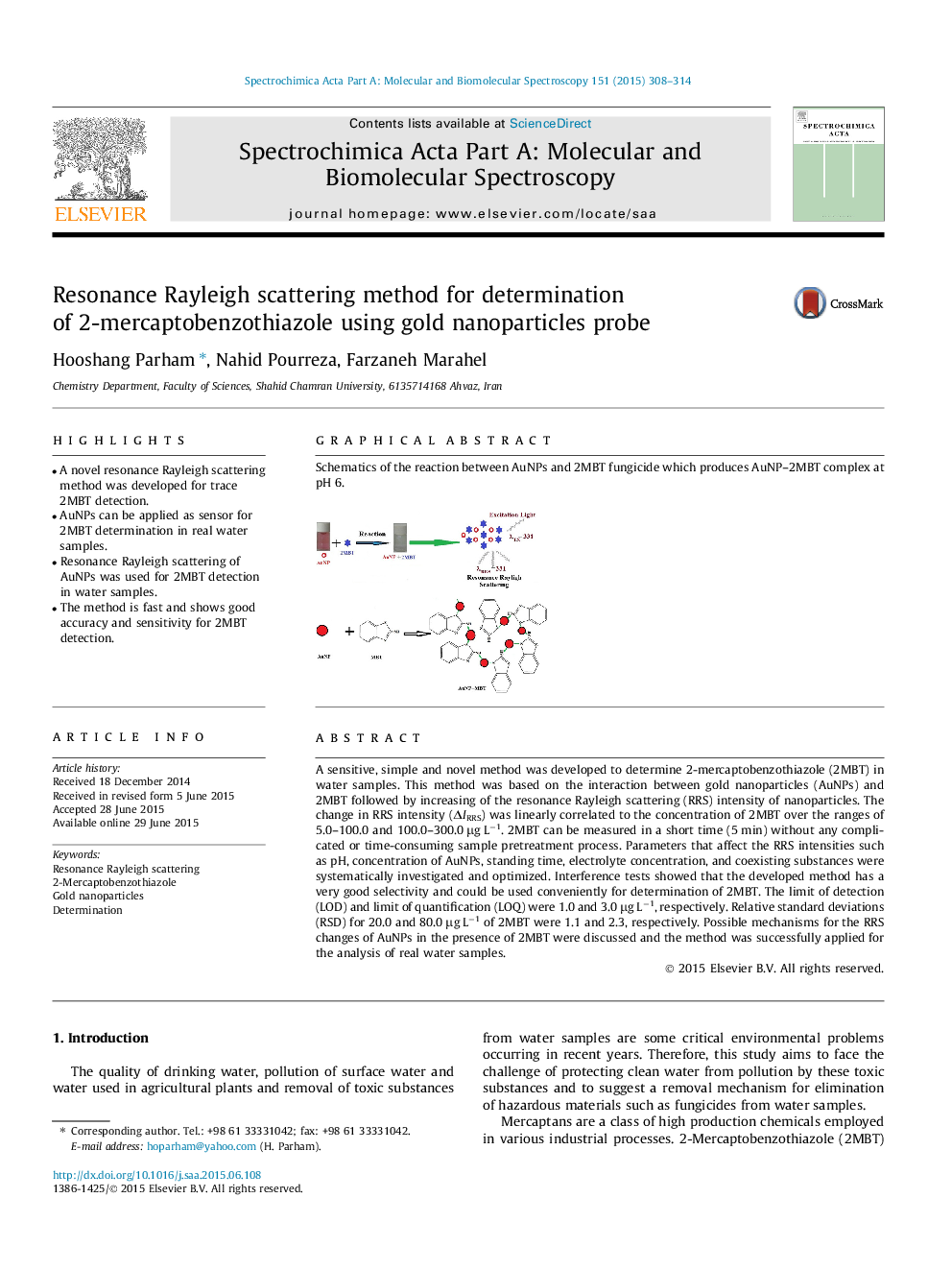| Article ID | Journal | Published Year | Pages | File Type |
|---|---|---|---|---|
| 1230084 | Spectrochimica Acta Part A: Molecular and Biomolecular Spectroscopy | 2015 | 7 Pages |
•A novel resonance Rayleigh scattering method was developed for trace 2MBT detection.•AuNPs can be applied as sensor for 2MBT determination in real water samples.•Resonance Rayleigh scattering of AuNPs was used for 2MBT detection in water samples.•The method is fast and shows good accuracy and sensitivity for 2MBT detection.
A sensitive, simple and novel method was developed to determine 2-mercaptobenzothiazole (2MBT) in water samples. This method was based on the interaction between gold nanoparticles (AuNPs) and 2MBT followed by increasing of the resonance Rayleigh scattering (RRS) intensity of nanoparticles. The change in RRS intensity (ΔIRRS) was linearly correlated to the concentration of 2MBT over the ranges of 5.0–100.0 and 100.0–300.0 μg L−1. 2MBT can be measured in a short time (5 min) without any complicated or time-consuming sample pretreatment process. Parameters that affect the RRS intensities such as pH, concentration of AuNPs, standing time, electrolyte concentration, and coexisting substances were systematically investigated and optimized. Interference tests showed that the developed method has a very good selectivity and could be used conveniently for determination of 2MBT. The limit of detection (LOD) and limit of quantification (LOQ) were 1.0 and 3.0 μg L−1, respectively. Relative standard deviations (RSD) for 20.0 and 80.0 μg L−1 of 2MBT were 1.1 and 2.3, respectively. Possible mechanisms for the RRS changes of AuNPs in the presence of 2MBT were discussed and the method was successfully applied for the analysis of real water samples.
Graphical abstractSchematics of the reaction between AuNPs and 2MBT fungicide which produces AuNP–2MBT complex at pH 6.Figure optionsDownload full-size imageDownload as PowerPoint slide
